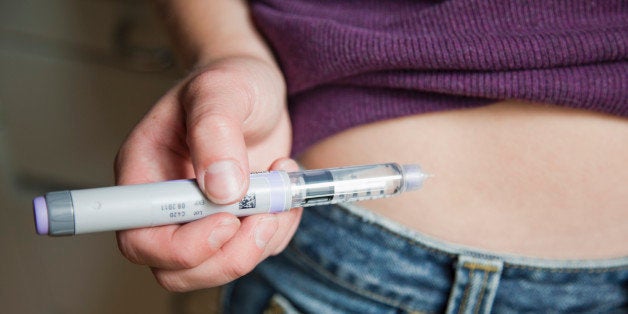
When I was first diagnosed with Type 1 diabetes more than 25 years ago, I had no health insurance. I was young, invincible and quite frankly, I held that typical, youthful arrogance that I would never get sick. And due to my young adult perspective and extreme naiveté about managing my diabetes condition, I believed that very little about my personal life would change with my diagnosis. I guess ignorance is bliss, but ignorance can also cause the eventual reality to be that much more painful.
Early into my diagnosis, I ended up in the ER with a severe flu that caused my diabetes to get out of control. When the ER physician found out that I had no health insurance, he kept me in the ER all day, hydrating and stabilizing me without actually admitting me to the hospital. I didn't understand at the time that he was doing me a huge favor, until I got the ER bill. For the first time, the reality of the costs associated with my diabetes and general health, hit me. My thoughts rambled from, "What if I can't afford my diabetes supplies?" to the ultimate, hard realization that I was vulnerable and living on the edge of a total financial and personal health disaster.
Because I was uninsured, my biggest fear was that I would run out of money and not be able to buy my diabetes supplies. And this fear dramatically affected my health as I often found myself avoiding doctor visits and also trying to self-diagnose and self-treat when I became ill. Everything about my care collapsed. I became reactive to my health needs instead of proactive. Preventative care was nonexistent and everything about the education of the daily management of my condition stopped. And eventually, I developed a deep sense of catastrophic thinking towards my diabetes and my ability to take care of myself.
In order to cut costs, I eventually began reusing my insulin syringes. That became a very dangerous and reckless habit that I had no choice but to resort to. I couldn't afford a new syringe for each insulin injection. I injected several times a day and let me just say that after the fourth or fifth injection, the reused, blunt needle would tear at my skin and leave bruises, cuts and small infections. I was embarrassed to tell anyone that I was reusing my syringes because I couldn't afford to use a new one every time and because no company would sell me affordable health insurance.
After a recent move, I came across an old box of syringes that were at least 20 years old. I opened the box and found one unopened bag of 10 syringes. I knew that they were very old due to the yellowed packaging, the faded printing on the bag and the type of syringe. As I held those uninsured/cash-purchased syringes in my now fully insured, healthy hand, I thought back on how those syringes were like gold to me. They were my literal lifeline, because by having Type 1 diabetes, I have to have insulin in order to survive. If I don't have access to insulin, I die within days. That's the ugly truth.
I wondered how I could have forgotten about those 10 precious commodities. Then, I remembered. Many years ago I began hoarding syringes as a safety net. I knew that if I ran out of money, I could use one of those syringes for each day and that would give me 10 days of survival. I was fighting to stay alive and I looked for any opportunity to do so. It's as simple as that. And another thing that I was keenly aware of was, because I was uninsurable, I could only afford to check my blood-glucose levels three times a day. For a person on multiple insulin injections, that is unhealthy and downright dangerous. And by that point, no one would sell me health insurance at any cost in order to help me stay healthy, safe and productive.
The fundamentals of the diabetes condition require a delicate balancing act between finances, health, quality of life and life expectancy. That truth is always there. Always. And for many years, my treatment and quality of life were compromised solely due to the fact that I could just barely afford my supplies.
I suppose you can see that there is a trend running through this story. No affordable health insurance or access or denial of coverage due to a pre-existing condition = compromised disease management = compromised health = higher health costs due to illness = higher insurance costs for everyone. Nobody wins. Everybody looses. Everybody.
I recently gave a diabetes speech in Dubai and afterwards, a doctor in the audience came up to me and said that he found strength and courage deep within my willingness to be vulnerable. Sharing my story with the audience that day and also sharing this blog as an insured professional businesswoman, there is a slightly embarrassing element here for me, even after all these years. But I did what I had to do and I'm proud of how I coped and made it through. I'm a fighter and a survivor and will not back down from this condition or the realities surrounding this condition. I believe that I have been given a diabetes voice and I'm universally obligated to use it. And within my vulnerability lies a current of resilience and trust that we, as a country, are slowly (and painfully) moving in the right direction with healthcare coverage and access. It's not perfect and it needs refinement, but at least we can try to move this mountain one stone at a time.
"Without deviation from the norm, progress is not possible." ― Frank Zappa